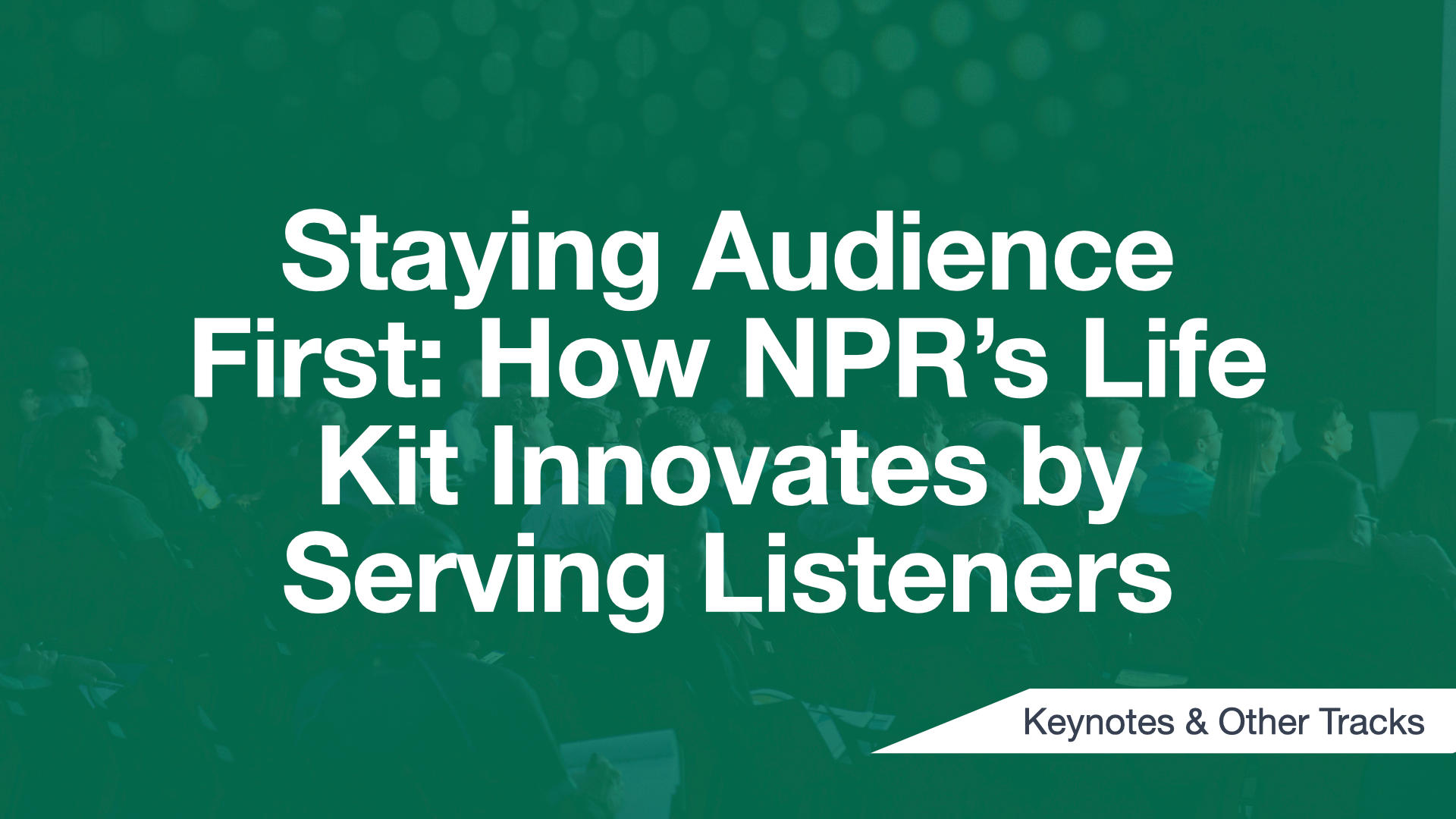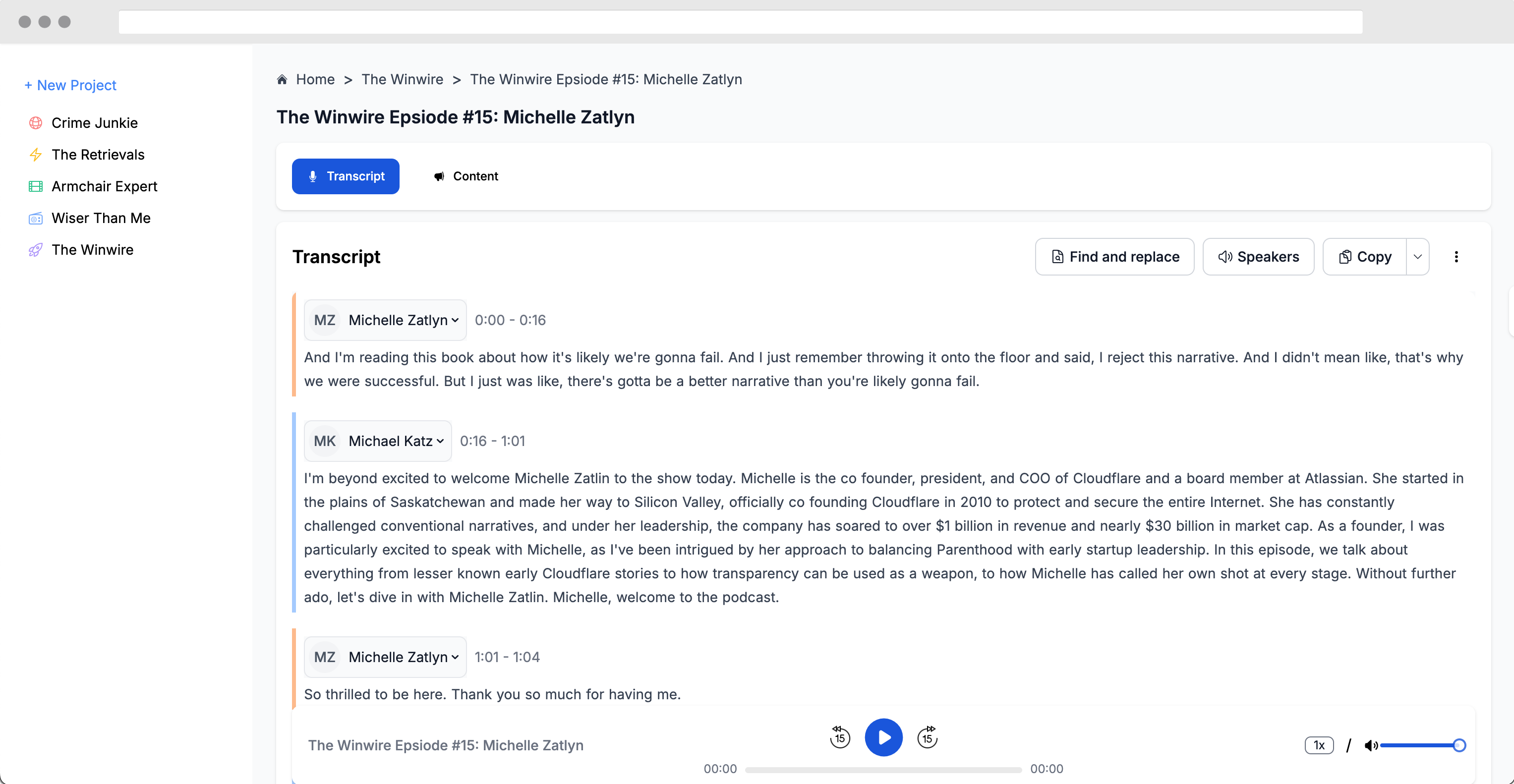Staying Audience First: How NPR’s Life Kit Innovates by Serving Listeners

Key Takeaways
Understand Your Audience Deeply: Knowing basic demographic information is essential, but going beyond that to understand their life stages and interests can help tailor content more effectively. For example, Life Kit targets women aged 20-35 in the Northeast, considering their specific needs and interests.
Adapt Content to Different Platforms: Different platforms attract different audiences. Life Kit uses Instagram for a younger audience and radio for an older demographic, tailoring content to fit each medium's unique characteristics.
Maintain a Consistent Tone: Establishing a consistent tone helps build a loyal audience. Life Kit focuses on being friendly, inclusive, and respectful, ensuring that listeners feel supported rather than judged.
Be the Audience Stand-In: During both the creation and editing processes, consider the audience's perspective. Ask simple, foundational questions to ensure clarity and inclusivity.
Constantly Experiment and Adapt: Regularly review data and audience feedback to refine and improve content. Life Kit frequently adjusts its format and topics based on listener responses and engagement metrics.
Overview
Meghan Keane, supervising editor at NPR's Life Kit, and Marielle Segarra, the show's host, discussed their approach to creating audience-focused content. They emphasized the importance of understanding their audience through demographic data and feedback, which helps them tailor episodes to meet listeners' needs.
Life Kit, initially designed as an evergreen resource, adapted to include timely topics during the pandemic, balancing evergreen and current issues. They highlighted the significance of maintaining a consistent tone—friendly, inclusive, and respectful—and the necessity of experimenting with content based on audience data.
They also stressed the importance of platform-specific content, ensuring that each medium, whether radio, podcast, or social media, serves its unique audience effectively.
Core Concepts
Understanding and Serving Your Audience
Knowing your audience goes beyond basic demographics. It involves understanding their life stages, interests, and needs to create relevant and engaging content.
Key Points:
Collect and analyze demographic data to identify your core audience.
Consider the life stages and specific interests of your audience.
Use data to understand what topics resonate most with your listeners.
Think about who you want to attract in addition to your current audience.
Examples:
Life Kit identified that their core audience consists of women aged 20-35 in the Northeast, which helped them tailor content around parenting, budgeting, and health.
They noticed a dip in listeners when they repeated similar topics, prompting them to diversify their content.
Quotes:
We have to stock it with a bunch of different things. We have personal finance, health and wellness, parenting, mental health.
We think about who else we want to bring in with our audience, and that's been a way for us to think about, okay, how do we bring in other people who may not be having their first kid, for instance?
Adapting Content for Different Platforms
Different platforms attract different audiences, and content should be adapted to fit the unique characteristics of each medium.
Key Points:
Personalize content to fit the audience and format of each platform.
Use Instagram for visual content and younger audiences.
Choose broader topics for radio to attract a more general audience.
Create specific, actionable content for podcasts.
Examples:
Life Kit uses Instagram reels to highlight specific tips from episodes, such as how to arrange grocery store flowers.
They choose broader topics like CPR for their radio show to appeal to a wider audience.
Quotes:
We try to think of every platform as a unique place.
I've been in rooms where people have no idea Life Kit was a podcast, but they knew us from Instagram.
Maintaining a Consistent Tone
A consistent tone helps build a loyal audience by setting clear expectations for the type of content and the manner in which it is delivered.
Key Points:
Establish a tone that aligns with your brand values.
Ensure the tone is friendly, inclusive, and respectful.
Avoid talking down to the audience; instead, offer support and actionable advice.
Use a consistent format to help listeners know what to expect.
Examples:
Life Kit avoids shaming listeners for not having emergency savings, instead offering supportive advice on how to manage finances.
They maintain a consistent format with takeaways and recaps to provide clear, actionable advice.
Quotes:
We could be a really, like, self-effacing, snarky show where we talk down to our listeners, but that's not what we've decided to do at all.
We always have a recap. And for a while, we were kind of, like, doing these more two ways, or interviews, rather, that were very, I don't know, like, more squishy and, like, feel, you know, which I don't think is a bad thing. But we had to really land that.
Conclusion
Life Kit's approach to content creation revolved around a deep understanding of their audience, adapting content for different platforms, maintaining a consistent and supportive tone, and constantly experimenting based on data and feedback. By focusing on these core principles, they built a loyal audience that trusted them for actionable, research-backed advice. Their success lay in their ability to stay audience-first, ensuring that every piece of content was relevant, engaging, and valuable to their listeners.
Food for Thought
How can you better understand the specific needs and interests of your audience to create more targeted content?
What platforms could you leverage to reach different segments of your audience more effectively?
How can you maintain a consistent tone that aligns with your brand values while still being adaptable to different topics and formats?
Reference Tools, Platforms, and Resources
Instagram: Used for visual content and engaging a younger audience.
NPR.org: Digital presence for broader reach and accessibility.
Audience Surveys: Collecting detailed feedback to refine content.
Instagram Reels: Highlighting specific tips and engaging visual content.
Radio Broadcasts: Reaching an older, more general audience with broader topics.





